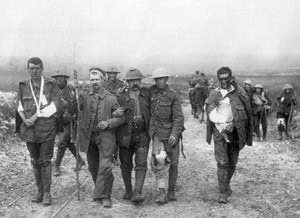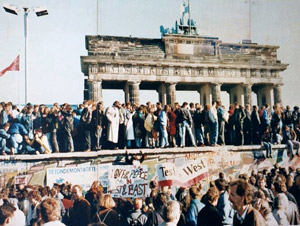Assassination of Archduke F. Ferdinand and Outbreak of World War I
June 28, 1914,

The war was to last four years and cost the lives of millions of men from all corners of the world.
Russian Revolution 1917
25 October 1917 - Start of October Uprising by Bolsheviks
Since the publication of Marx's Communist Manifesto, there had been sporadic Communist revolutions in European countries, but nothing had really succeeded. But in October 1917, the Bolshevik revolution, led by Lenin, brought about a radical new form of government with world wide implications. Lenin was a fervent Marxist and wasted little time in implementing his version of a 'dictatorship of the Proletariat'. Communist Russia divided the world. It was seen by some as an alternative to the inequities of Capitalism and by others as an embodiment of totalitarianism and lack of freedom. Invasion of Poland
1st September 1939
On 1st September, 1939, Hitler's Nazi Germany invaded Poland, ostensibly for 'lebensraum' and to redress the imbalances of the Treaty of Versailles, but the invasion of a sovereign nation finally convinced the allies - Great Britain and France of Hitler's wider intentions for the occupation of Europe. After appeasing Hitler over Austria and Czechoslovakia, Poland proved the final straw and on September 3rd, 1939, Great Britain declared war on Nazi Germany. The Second World War was to last until May 1945, costing the lives of approximately 50 million people. Less well known is that, under a secret Nazi-Soviet pact the Soviet Union also occupied parts of Poland at the same time as Germany's invasion.Pearl Harbour 1941
December 7, 1941

In 1941, the axis powers held a supremacy over Europe and parts of Asia. Great Britain stood undefeated, but, without the strength to win against an overpowering enemy. The bombing of Pearl Harbour, led to the escalation of the world war into the Pacific arena and also brought American into war with both Japan and Germany. Three years later, it was American troops who provided the majority of the manpower in the liberation of occupied Europe.
Atomic Bomb Hiroshima
August 6, 1945

Indian Independence 1947
15 August 1947
India had stood as the crowing jewel in the crown of the British Empire. It was the second most populous nation in the world. After many years denying Indian calls for independence, Britain finally agreed to full Indian independence in 1947. Indian independence was accompanied by a painful separation and the birth of a new nation - Pakistan. The separation led to painful incidences of sectarian violence and killing; it led to the migration of many millions of people who found themselves on the wrong side of the border. The independence of India also created a new independent nation which claimed allegiance to neither US or the Soviet Union - but a third way as Nehru called it. With economic development, India has the potential to become a new superpower in the coming century.The Establishment of Maoist China
October 1, 1949
In the aftermath of the second world war, China was involved in a bitter civil war between the Communists led by Mao Tse Tung and the Nationalists by Chiang Kai-shek,. On October 1st, 1949, the triumphant Communist Party established the People's Republic of China. This created another powerful Communist State in the most populated country in the world. The Communist hold on power, profoundly influenced the lives of the Chinese who suffered under the great famine of the 1960s and Cultural Revolution of the 60s and 70s. Even now, the Chinese Communist party retains strong political power - even if it has adapted its economic policies.Assassination of John F Kennedy
November 22, 1963

"My fellow Americans, ask not what your country can do for you -- ask what can you do for your country."(JFK from Inauguration speech Jan 1961)
After his assassination, Lyndon Johnson became President and American involvement in Vietnam grew, leading to a bitter conflict that came to divide America. Although Lee Harvey Oswald was arrested for the assassination, evidence points to a wider conspiracy and the involvement of more than one lone gunmen.
Fall of the Berlin Wall
November 9, 1989

9/11 Terrorist Attacks.
11th September 2001
The US had experienced sporadic terrorist attacks before. But, the sheer audacity and scale of these terrorist attacks shocked the US and the world. The loss of life was estimated at just under 3,000. The event changed American foreign policy. It was a motivating factor behind the controversial invasion of Iraq and led to a 'war on terror' symbolised by Guantanamo Bay and a debate over the justification of torture














 In October 1999 an Iceberg the size of London broke free from the Antarctic ice shelf .
In October 1999 an Iceberg the size of London broke free from the Antarctic ice shelf .



 A typical hurricane produces the energy equivalent to 8,000 one megaton bombs.
A typical hurricane produces the energy equivalent to 8,000 one megaton bombs.
 Microbial life can survive on the cooling rods of a nuclear reactor.
Microbial life can survive on the cooling rods of a nuclear reactor. When Krakatoa erupted in 1883, its force was so great it could be heard 4,800 kilometres away in Australia.
When Krakatoa erupted in 1883, its force was so great it could be heard 4,800 kilometres away in Australia.